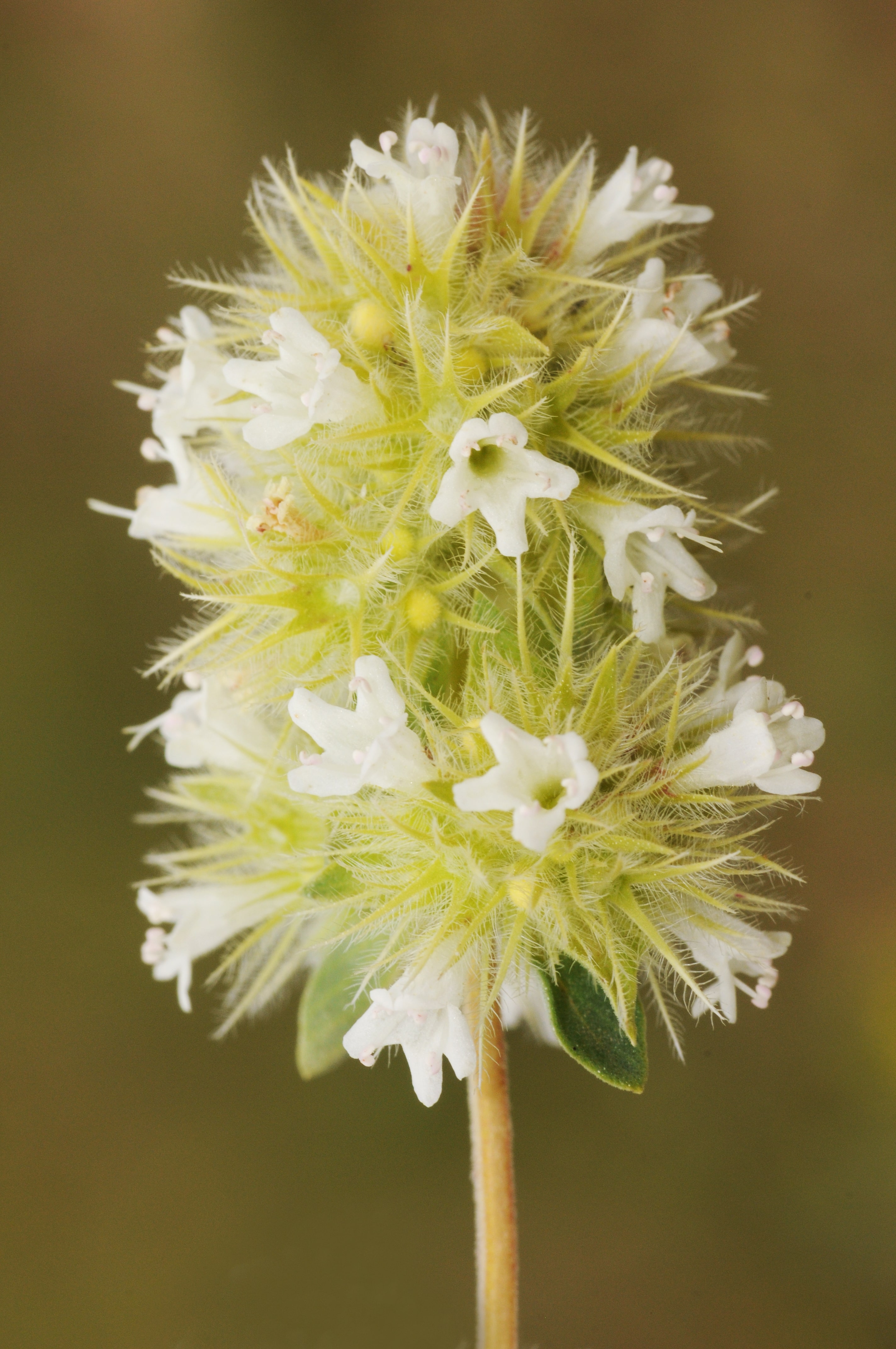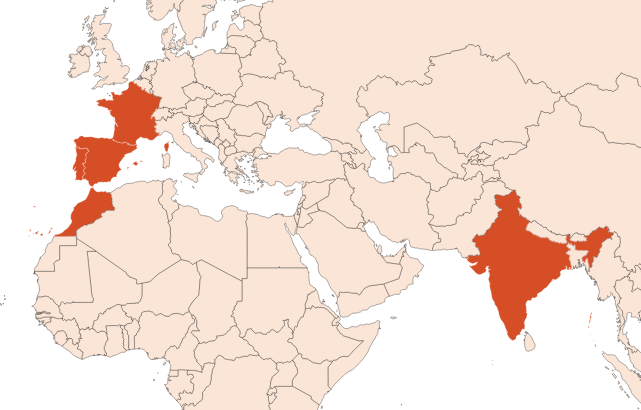White Thyme EO
Naturelle
Herbal > Agrestic > Grassy > Leather

Crédits photo: ScenTree SAS
Latin name :
Thymus mastichina
Botanical profile :
White thyme belongs to the Lamiaceae family and the genus Thymus.
Geographic origin :
Originally from Spain, this species of thyme is produced there, as well as in Portugal for the most part
Chemotypes :
The genus Thymus includes about 350 different species and a very large number of different chemotypes. Among the main chemotypes are Thymol, Carvacrol, Eucalyptol, Linalool, Geraniol, p-Cymene, α-Thujene and Aplha-Terpineol thymes. These chemotypes may concern different species.
The Thymol chemotype of Red Thyme EO (Thymus vulgaris) is however the most used because it is very economical and it allows the isolation of many compounds of interest.
The Eucalyptol chemotype of White Thyme EO (Thymus mastichina) is also widely used.
Among the other species of the genus Thymus, in addition to the white thyme, there are: Moroccan thyme (Thymus satureioides - Borneol and Carvacrol), wild thyme (Thymus serpyllum) with many chemotypes, conehead thyme (Thymus capitatus - Carvacrol or Thymol), Spanish thyme (Thymus zygis - Thymol or Linalool and many others).
This list is not exhaustive because thyme is an aromatic that has been subject to a lot of crossings throughout its history. Some species of thyme thus have two majority chemotypes.
The Thymol chemotype of Red Thyme EO (Thymus vulgaris) is however the most used because it is very economical and it allows the isolation of many compounds of interest.
The Eucalyptol chemotype of White Thyme EO (Thymus mastichina) is also widely used.
Among the other species of the genus Thymus, in addition to the white thyme, there are: Moroccan thyme (Thymus satureioides - Borneol and Carvacrol), wild thyme (Thymus serpyllum) with many chemotypes, conehead thyme (Thymus capitatus - Carvacrol or Thymol), Spanish thyme (Thymus zygis - Thymol or Linalool and many others).
This list is not exhaustive because thyme is an aromatic that has been subject to a lot of crossings throughout its history. Some species of thyme thus have two majority chemotypes.
Extraction process :
White thyme, or mastic, is an herbaceous plant that reaches up to 50 cm tall. Its fragrant principle is contained in its stems, but especially in its leaves, which are only one centimetre long. In Spain, almost all cultures are wild. The propagation of a thyme culture is done by sowing seeds. Cutting methods are also used. Also, a few tens of centimetres must be left between the plants to guarantee a better quality of the essential oil and a better extraction yield. The plants need a lot of sun exposure. The culture starts when the plant blooms (the flowers are white as reflected by the name of this thyme).
In cultivation, the leafy stems of thyme are mowed or hand picked to be dried for a few hours under 104 °F. In Spain, cultivation takes place from February to August.
A steam distillation under pressure allows to collect an essential oil at the refrigerant outlet, by decantation of the water.
A volatile solvent extraction gives an absolute of white thyme, which is very little used.
In cultivation, the leafy stems of thyme are mowed or hand picked to be dried for a few hours under 104 °F. In Spain, cultivation takes place from February to August.
A steam distillation under pressure allows to collect an essential oil at the refrigerant outlet, by decantation of the water.
A volatile solvent extraction gives an absolute of white thyme, which is very little used.
Major Components :
For a Cineole and Linalool chemotype :
Eucalyptol (40-45%)
Linalool (30-35%)
Alpha-Terpineol (1-5%)
Beta-Pinene (1-5%)
Sabinene (1-5%)
D-Limonene (1-5%)
Alpha-Pinene (1-5%)
Eucalyptol (40-45%)
Linalool (30-35%)
Alpha-Terpineol (1-5%)
Beta-Pinene (1-5%)
Sabinene (1-5%)
D-Limonene (1-5%)
Alpha-Pinene (1-5%)
- Uses in perfumery :
- Used in all types of perfumery, in fougere and liquorice accords and anti-dandruff shampoo perfumes.
- Other comments :
- The name given to thymes is representative of the colour of their flowers. For white thyme, they are obviously white. White thyme is not consumed regularly in the mediterranean cuisine as red thyme is preferred.
White thyme is a precursor to Thymol or natural eucalyptol although it is not the main precursor.
The quality of thyme and its essential oil is subject to compliance with ISO standards imposed by the AFNOR (French Association of Standards). These standards relate to the physical and chemical characteristics of the plant and oil. Even though, adulteration is possible with synthetic Thymol or Eucalyptol. - Volatility :
- Heart
- Appearance :
- Green liquid
- Stability :
- Aromatic compounds can be chromophoric and cause a coloration of the oil, especially in alkaline bases
The terpenes identified in this raw material can polymerize when they are oxidized - Price Range :
- €€€
- Aromatherapy :
Informations provided below are taken from reference works in aromatherapy. They are given for information purposes only and can not constitute medical information, nor engage the responsibility of ScenTree.
The essential oil of mastic thyme is famous for its expectorant (coughing) and antibacterial virtues. It is recommended in case of bronchitis.

Crédits photo: ScenTree SAS
- EINECS number :
- 84929-51-1
- FEMA number :
- Donnée indisponible.
- Allergens :
- Geraniol - D-Limonene - Linalool
- IFRA :
- This ingredient is restricted by IFRA
- Annexe I :
- Some regulated synthetic ingredients are found in nature and in certain proportions in natural ingredients. This presence in nature has to be taken into account when calculating limits of use recommended by the IFRA. In case you do not know these concentrations, you can use the ones estimated by the IFRA. Here they are :
- Annexe I :
- Some regulated synthetic ingredients are found in nature and in certain proportions in natural ingredients. This presence in nature has to be taken into account when calculating limits of use recommended by the IFRA. In case you do not know these concentrations, you can use the ones estimated by the IFRA. Here they are :
| List of regulated compounds contained in this ingredient | ||
|---|---|---|
| Regulated ingredient name | CAS N° | Estimated Concentration |
| Geraniol | 106-24-1 | 0,1 |
| Methyl eugenol | 93-15-2 | 0,03 |
| Eugenol | 97-53-0 | 0,1 |
| List of regulated compounds contained in this ingredient | ||
|---|---|---|
| Regulated ingredient name | CAS N° | Estimated Concentration |
| Geraniol | 106-24-1 | 0,1 |
| Methyl eugenol | 93-15-2 | 0,03 |
| Eugenol | 97-53-0 | 0,1 |
To learn more about IFRA's standards : https://ifrafragrance.org/safe-use/library
ScenTree is solely responsible for the information provided here.
Do you sell any of the raw materials? Would you like to let our users know?
Send an email to fournisseurs@scentree.co to learn about our advertising opportunities.
